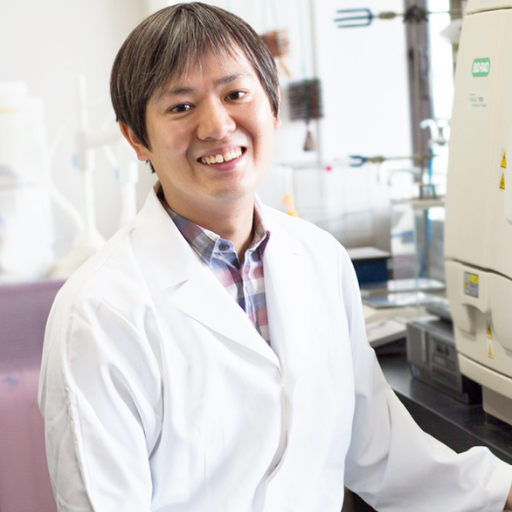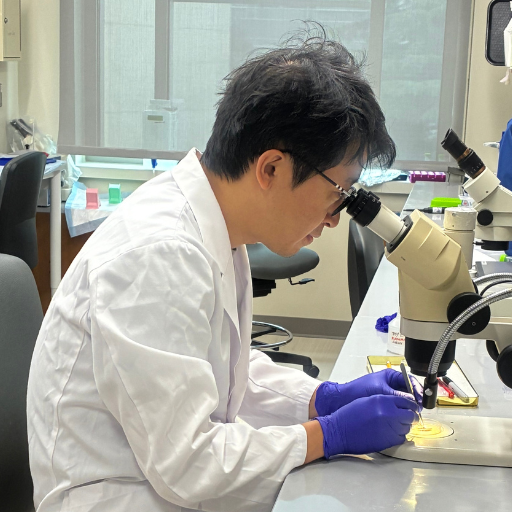A New Animal Model of Severe Age-Related Macular Degeneration

About the Research Project
Program
Award Type
Postdoctoral Fellowship
Award Amount
$189,570
Active Dates
July 01, 2021 - June 30, 2024
Grant ID
M2021001F
Mentor(s)
Orson Moritz, PhD, University of British Columbia (Canada)
Goals
To determine the role of deposits of cellular debris termed reticular pseudodrusen (RPD) in the development of severe forms of age-related macular degeneration. This study will explore the origins of cellular debris deposits in the retina and determine why they are correlated with vision loss. I will use a CRISPR-modified frog model with a mutation that affects photoreceptor structure. The photoreceptors slowly break down, and then the cellular debris appears, similar to what happens in an aging eye. I will determine the composition of these deposits using MALDI imaging mass spectrometry to determine novel therapeutic targets. I will test treatments that prevent the accumulation of these deposits to see whether vision is preserved.
Grantee institution at the time of this grant: University of British Columbia
Summary
Age-related macular degeneration (AMD) is the leading cause of visual impairment and blindness in persons over the age of 60. There is no cure and the ensuing severe progressive vision loss is a detriment to livelihood, mobility, and independence. One of the difficulties in understanding this disease is that there is no animal model that fully encapsulates all of the complex features of human AMD. I have created a prom1-null Xenopus laevis (African clawed frog) model that age-dependently exhibits key features of early to intermediate AMD such as loss of photoreceptor sensitivity and signalling ability and the development of reticular pseudodrusen (RPD).
RPD are associated with an increased risk of progression to severe AMD but insufficient detection methods and the lack of a robust animal model have impaired detailed study of this relationship in the past. Advances in clinical imaging technology have made RPD detection in humans easier than ever, but detection alone does not tell us why they form or how they may influence AMD progression. The characterization of this new animal model of AMD will provide significant insight into the relationship between RPD and AMD progression and the role that prom1-mutations may play in the development of RPD. Establishing RPD as an early-indicator of AMD and understanding the role that RPD may play in AMD progression will result in more effective prevention of AMD-associated blindness.
Unique and Innovative
Animal models allow us to study human disease in an environment that is impossible to mimic using cell lines or retinal cultures. Until the discovery of RPD-like deposits in my prom1-null frogs, there was no approachable animal model of RPD and geographic atrophy as a result of age-related macular degeneration. The results from this research project will further our knowledge of RPD development and verify the role of RPD as a biomarker and a risk factor for severe progression of age-related macular degeneration.
Foreseeable Benefits
This research project is relevant to human disease in that it will further our knowledge of RPD development, establish RPD as a risk factor for severe AMD, and provide visual health practitioners plausible and identifiable biomarkers that can be detected during routine eye examinations. This project will inform treatment for patients that have significant size or numbers of RPD in the form of minor changes in diet or lifestyle that will prevent or slow progression to visual impairment and blindness, leading to significantly improved outcomes for aging populations.
Related Grants
Macular Degeneration Research
How Aging of the Immune System Affects Age-Related Macular Degeneration
Active Dates
July 01, 2025 - June 30, 2028

Principal Investigator
Masayuki Hata, MD, PhD
Current Organization
Kyoto University
Macular Degeneration Research
Microglia’s Roles in AMD to Inform Therapies for Vision Loss Prevention
Active Dates
July 01, 2025 - June 30, 2027

Principal Investigator
Nobuhiko Shiraki, PhD
Current Organization
Duke University School of Medicine
Macular Degeneration Research
The Novel Role of an Intracellular Nuclear Receptor in AMD Pathogenesis
Active Dates
July 01, 2024 - June 30, 2026

Principal Investigator
Neetu Kushwah, PhD
Current Organization
Boston Children’s Hospital




